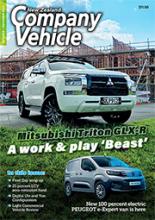Telematics has become a normal fleet tool in recent years, and this has come about through the need for greater safety for mobile employees, increased efficiency in the workplace and reduced expenses, be they fleet operational costs, insurances, fuel or incidents.
Automakers around the world are equipping their vehicles with much more sophisticated connectivity and user technology services and there are companies who are producing work around solutions for older vehicles, allowing them to utilise contemporary connectivity elements as a retrofit solution.
For the new vehicles coming into our fleets however, telematics has allowed better and more effective integration with other business systems, such as safety compliance, risk management and maintenance, to name but a few.
It is unlikely that transport as we know it is going to become less connected than it is today, quite the opposite in fact as automakers develop proprietary connectivity functionality and improve upon that functionality year-on-year.
How well then, will telematics keep up and what are we likely to see in terms of trends moving forwards?
Covid taught us many things and revolutionised the way many of us operate. Interestingly the saying about clouds and silver linings has never rung truer. We all wanted greater work/home life balance and many of us now have exactly that.
For the fleet manager however, remote working has made life challenging and monitoring fleet productivity from a distance requires a greater understanding of the benefits and acceptance of telematics, be that on a laptop or even a phone app, and yes, that last is a thing.
Telematics allows verification of a vehicle’s status, its location, how it is being driven and can signal unexpected events in real time regardless of where the vehicle is in relation to a line manager or shift supervisor.
The ability for a telematics solution to do this further allows society to operate in a remote working environment and, as our needs in this regard come to light, telematics solution providers will be able to adapt and improve for greater efficiency and productivity; a technological chicken or egg situation.
More out of necessity than fuelled by internal change, telematics has had to embrace 5G technology and this trend is ongoing.
In very basic terms, 5G is a global wireless standard allowing for higher data speeds, less time between sending and receiving data (latency), greater reliability, increased network capacity and the ability to connect everyone with everything.
Remote fleet management requires the robust networking 5G provides and 5G provides a great level and faster distribution of more detailed information to improve efficiency and productivity.
We are likely to see improvements of telematics systems through the integration of voice command capabilities – similar to those of in-house products like Siri, Alexa and Cortana – being utilised to improve telematics functionality.
In the meantime, more prosaic trends like in-vehicle video will continue to improve telematics systems as a supporting mechanism. And this won’t be restricted to the physical nature of video, but how the video material is used in the legal world – who can use it, how it can be used and who has access to it.
In the United States, the ethical niceties of in-vehicle video are being refined state by state and this will filter through to other countries as time goes on.
Of course, in-vehicle video plays a major role in support of telematics which is regarded widely as being a core contributor to driver safety.
Telematics allows fleet managers to respond quickly and effectively to situations where an employee may be at risk.
Already, telematic functionality includes driver behaviour recording, geofencing, alarm systems and driver identification, all of which contribute to the well being of on-the-road employees.
Furthermore, using extensive data mining, it is possible to see where fleet operations are potentially hazardous and allow the fleet manager to take steps accordingly, to ensure employees’ safety is not compromised.
Any business or organisation with a fleet of vehicles will advance its efficiency and management using the ever-improving world of telematics which will need – in the short term – to advance in terms of data security, GPS tracking and gathering meaningful information from both vehicles and drivers in larger volumes.



